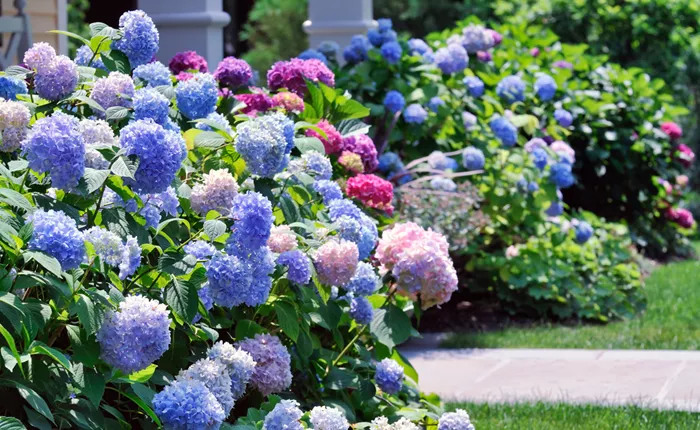Hydrangeas are popular flowering shrubs that brighten gardens with their large, colorful blooms. They can grow in pots, garden beds, or even climb walls, making them versatile for many garden styles.
However, to help hydrangeas grow well and bloom beautifully, it’s important to plant them in the right spot. Experts say there are five places you should avoid when planting hydrangeas.
1. Dry Soil
Hydrangeas need soil that holds moisture but drains well. Dry, sandy, or desert-like soil can cause their leaves to turn yellow and the plants to struggle. If your soil is dry, mix in plenty of compost to help it retain moisture. Mulching with leaf mold or organic material also keeps the soil moist and protects roots.
2. Waterlogged Soil
While hydrangeas like moisture, their roots cannot survive in soggy or poorly drained soil. Waterlogged soil can cause root rot, which may kill the plant. If your garden has heavy clay soil, improve drainage by adding compost or consider planting hydrangeas in pots with good potting soil.
3. Too Much Sun or Too Much Shade
Most hydrangeas prefer morning sun and afternoon shade. Too much direct, hot afternoon sun can scorch leaves and fade blooms, especially in warmer climates. On the other hand, planting in deep shade, like the north side of a building, can prevent flowering and cause weak growth. Panicle hydrangeas tolerate more sun, but all types benefit from some afternoon shade.
4. Exposed to Harsh Winter Weather
Bigleaf hydrangeas are sensitive to cold winter winds, which can damage flower buds and reduce blooming. Planting them near a building, fence, or evergreen shrubs like boxwood can protect them from winter wind and cold. Sheltered spots help the buds survive through winter for a better spring bloom.
5. Spaces That Are Too Small
Hydrangeas can grow quite large, so planting them in cramped spaces can lead to over-pruning and poor flowering. Experts recommend giving plants enough room to reach their full size or choosing compact varieties. Pruning at the wrong time can also reduce blooms, so it’s best to prune bigleaf hydrangeas in midsummer, not in spring or fall.
By avoiding these five planting mistakes, gardeners can enjoy healthy hydrangeas with vibrant, long-lasting flowers. For best results, plant hydrangeas in moist, well-drained soil with morning sun and afternoon shade, and protect them from harsh winds and extreme conditions.


